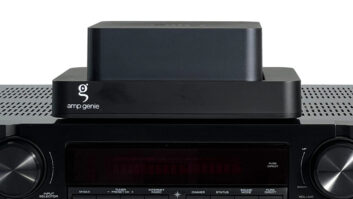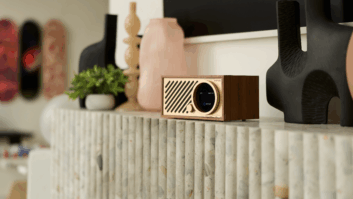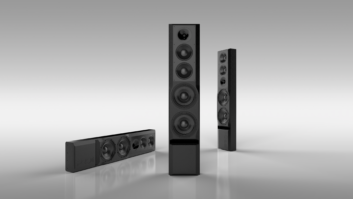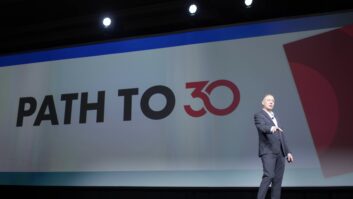Montebello, Calif. – Theta
Digital is planning its first Class D amplifier and preparing multiple upgrade
options for its existing flagship Casablanca III HD preamp/surround processor.
The card-upgradable Casablanca,
whose base price is a suggested $13,745, will get an optional $1,995-suggested digital
output card that features six pairs of wideband 192kHz AES/EBU outputs for connection
to outboard digital-to-analog converters (DACs) such as Theta’s Generation VIII
Series 3. The card ships in February to upgrade previously purchased
Casablancas but can also be included in new models ordered from the factory.
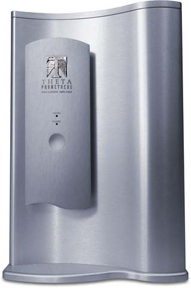
A second upgrade is a post-processing
card that extends digital audio bandwidth to 192kHz on all channels, adds DTS
Neo:X 11.1-channel post-processing, and accepts a bundled daughter card that
delivers Dirac Live digital room correction. The upgrade will make Casablanca
the first, or one of the first, audio components to support DTS Neo:X’s 11.1-channel
capability, said senior sales and marketing VP Jeff Hipps. Select AV receivers currently
on the market a 9.1-channel implementation of Neo:X.
The solution will be available in
June at $3,995 for installation by dealers and advanced consumers.
Also beginning in June, the
post-processing card without Dirac daughter card will be included as a running
change in new Casablanca models at no extra charge. Consumers who buy a new
Casablanca beginning in June and decide later to add Dirac will pay $3,995 for
the daughter card, firmware upgrade, and calibration gear.
Dirac Live digital room correction
uses mixed phase processing to improve in-room frequency response and phase
errors, reduce first-order reflections, and improve time-alignment, the company
said. Set-up requires a laptop computer and a supplied microphone.
Dirac’s price includes computer
software, a microphone, USB preamplifier, microphone stand, and all necessary
cabling to measure room response and make corrections.
The computer software would recommend
a target response curve based on test tones generated by the Casablanca. Users
can edit the recommended curve to suit their personal preferences and store up
to four curves in the Casablanca. Each curve could be tied to a particular Casablanca
input, creating music and movie curves and the like.
For its part, DTS Neo:X adds a
pair of front-height speakers and a pair of front-wide speakers to a
traditional 5.1-channel or 7.1-channel surround-sound speaker system. It
up-mixes existing two-, 5.1- and 7.1-channel soundtracks to up to 11.1
channels. The two front-height channels elevate discrete and ambient sounds,
and two front-wide speakers widen the front image and provide smooth tracking
of front-to-side action.
Although the Casablanca
previously supported up to 12 channels via Theta’s proprietary post-processing
technology, that technology offered up to seven full-band channels and five
independent subwoofer channels, Hipps said. The least expensive 12-channel
version of Casablanca is $19,370.
Casablanca also decodes Blu-ray’s
HD Audio codecs and features 3D-capable HDMI inputs and outputs.
In April, the brand will ship the
$6,000 Prometheus monoblock amp, which will be the brand’s first Class D
amplifier.
Until now, all of Theta’s
amplifiers were balanced designs with zero global feedback, said Hipps. The new
technology drives down distortion. Power is rated at 250 watts RMS into 8 ohms,
500 watts RMS into 4 ohms and 1,000 watts RMS into 2 ohms with less than
0.01 percent THD. The signal-to-noise ratio is 128dB A-weighted, and damping
factor exceeds 2,500 at any frequency from 0Hz-20 kHz, Hipps said. Unlike
typical Class D designs, he added, the frequency response is +0, -0.5 dB from
20Hz to 20kHz at any impedance load.
Theta is owned
by audio-component supplier
., which also
owns the B&K Components, ATI, AudioAccess, and BGW brands.




